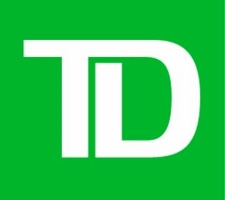You are now leaving our website and entering a third-party website over which we have no control.
ETF Solutions
Exchange-Traded Funds (ETFs) have come a long way since starting as an index tracking investment. Today, ETFs have expanded to feature different asset classes, industry sectors, geographic regions and highly specialized strategies to give investors a greater opportunity to personalize their portfolio. Learn about the different types of ETFs available from TD Asset Management Inc. (TDAM) to help you understand the roles they can play in your portfolio.
For more information on the full range of TD ETFs, download the TD ETFs Quick Product Guide.
Active ETFs
Actively managed ETFs are designed to deliver returns that exceed those of a broad-based benchmark index. At TDAM, these ETFs leverage the deep expertise of our Portfolio Managers, extensive research teams, and a propriety investment process that identifies high-quality companies with strong balance sheets and sound management capabilities. This helps position our ETFs to provide investors with specific outcomes such as income, growth or downside protection over time.
Special Focus ETFs
These ETFs seek to track a broad-based market index while providing investors with specific exposure to certain sectors, regions and/or themes. In certain instances, the Portfolio Manager may use an active strategy to invest in a unique security type
All-in-One Portfolios
The TD ETF Portfolios are all-in-one solutions that help make investing easy. Each TD ETF Portfolio offers exposure to a diversified basket of stocks and bonds, by investing in various broad-market index ETFs globally, rebalanced quarterly - all at a low cost. Learn more
Quantitative ETFs
These ETFs seek to improve diversification, increase returns or lower investment risk. Quantitative ETFs, also known as Smart Beta or Strategic Beta ETFs, use a systematic rules-based process to identify group of securities with specific attributes, i.e. "factors" that have persistently generated higher returns or lower risk than a traditional market-cap index1.
This strategy of targeting factors employs a combination of passive and active strategies and has been used by institutional investors for years. The systematic rules-based process removes the human emotions of decision making while the active strategy involves the Portfolio Manager's decisions on which factors to focus on. Quantitative ETFs can provide exposure to securities with a single or multiple factors. While there are many factors out there, the common and well researched ones include the following:
- Size: Small-cap securities can provide higher return than securities of large companies.
- Value: Stocks priced lower than their actual "fundamental" value have tended to outperform securities of growth companies.
- Quality: Stocks of financially sound companies tend to provide higher returns than less stable companies.
- Momentum: Securities that experienced positive price trends in the past are likely to do the same in the future.
- Low-volatility: Unlike other factors which are used to enhance returns, securities that experience less price fluctuations, can provide similar return to the market but with less risk.
The TD Q Team at TDAM actively manages the TD Q Exchange-Traded Funds by combining the science of quantitative investment with the deep expertise of a broad portfolio management team. Learn more
Broad-Market Index ETFs
Broad-market index ETFs provide instant exposure to hundreds of securities that would otherwise be very costly and time-consuming for an average investor to purchase. For example, a broad-market Canadian index ETF can include the same basket of securities, in the same proportion, as the S&P/TSX Composite Index which generally represents the Canadian equity market.
These ETFs are considered to be passively managed investments because the Portfolio Manager attempts to replicate a specific index with the goal of delivering a similar performance as the index.
1 Market cap index is an index that's weighted according to the market size of the company (e.g., bigger companies have larger representation on this type of index).
TD ETFs are managed by TD Asset Management Inc., a wholly-owned subsidiary of The Toronto- Dominion Bank.
Commissions, management fees and expenses all may be associated with investments in exchange-traded funds (ETFs). Please read the prospectus and ETF Facts before investing. ETFs are not guaranteed, their values change frequently and past performance may not be repeated. ETF units are bought and sold at market price on a stock exchange and brokerage commissions will reduce returns.
®The TD logo and other trade-marks are the property of The Toronto-Dominion Bank or its subsidiaries.
 Canada
Canada

